Science Daily News | 24 Jun 2023

Views (133)
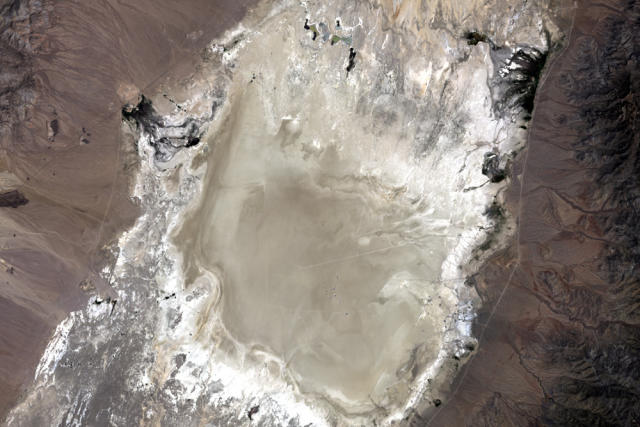
Oregon county sues oil, coal companies for $51 billion over deadly heat dome
Oregon’s most populous county is suing more than a dozen large fossil fuel companies to recover costs related to extreme weather events linked to climate change. The lawsuit filed Thursday in Multnomah County Circuit Court alleges the combined carbon pollution the companies emitted was a substantial factor in causing and exacerbating a 2021 heat dome that killed 69 people, The Oregonian/OregonLive reported. Multnomah County is home to Portland and known nationally for mild weather and rain.
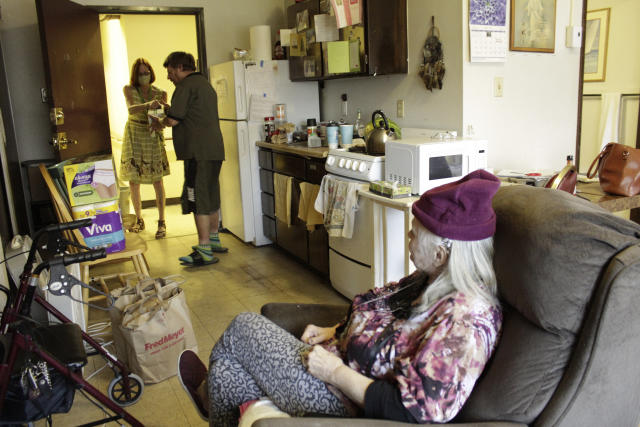
PORTLAND, Ore. (AP) — Oregon’s most populous county is suing more than a dozen large fossil fuel companies to recover costs related to extreme weather events linked to climate change.
The companies named in the lawsuit include Shell, BP, Chevron, ConocoPhillips, Koch Industries and ExxonMobil, among others.
The county seeks over $51 billion in damages, including $50 million for costs it says it incurred because the heat dome.
Multnomah County is also asking for $1.5 billion in damages to pay for costs associated with future extreme heat events and an additional $50 billion to study, plan, and “weatherproof” against extreme heat. Some of the measures would include expanding health care and emergency services, adding insulation and HVAC systems to buildings, tearing out asphalt and planting more trees, Multnomah County chair Jessica Vega Pederson said.
“At the core, this lawsuit is about fairness and accountability for these giant oil companies who have record profits, who have known about the damage that their products do to our environment and who have been using pseudoscience, disinformation and outright lies for decades,” Pederson said.
Most of the companies named in the lawsuit didn’t respond to the newspaper’s request for comment. Chevron Corp. counsel Theodore J. Boutrous, Jr. in a statement contended the lawsuit makes “novel, baseless claims,” is unconstitutional and unfairly targets "one industry and group of companies engaged in lawful activity that provides tremendous benefits to society.”
Multnomah County’s lawsuit joins communities around the globe that have filed lawsuits against climate polluters that continue to market products that science shows are driving human-caused climate change.
Thousands of dead fish have washed up on a Thai beach. Experts say climate change may be to blame
Climate change may have stimulated a plankton bloom that caused thousands of dead fish to wash up along a roughly 4 kilometer (2.5 mile) stretch of beach in Thailand’s southern Chumphon province on Thursday, an expert said.
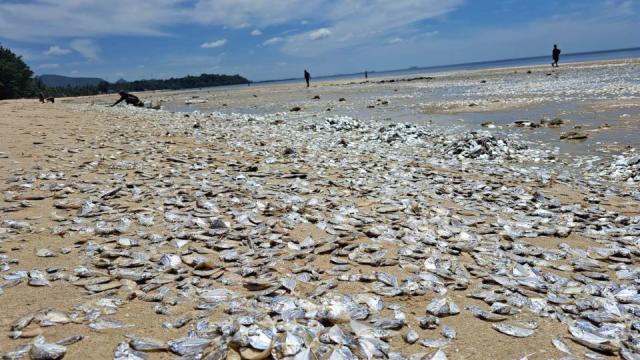
Climate change may have stimulated a plankton bloom that caused thousands of dead fish to wash up along a roughly 4 kilometer (2.5 mile) stretch of beach in Thailand’s southern Chumphon province on Thursday, an expert said.
Thon Thamrongnawasawat, deputy dean of the Faculty of Fisheries at Kasetsart University, attributed the fish deaths to the bloom – a natural occurrence that lowers oxygen levels in the water and causes fish to suffocate.
“Various natural phenomena, such as coral bleaching or plankton bloom, have naturally occurred for thousands to tens of thousands of years. However, when global warming occurs, it intensifies and increases the frequency of existing phenomena,” he said.
According to local authorities, plankton blooms happen once or twice a year and typically last two to three days.
Officials have collected seawater for further assessment and analysis.
“Whether it’s Australia and places like the Great Barrier Reef or even places around England which are experiencing quite bad marine heatwaves at the moment, it’s really going to be detrimental to those local ecosystems,” said Sarah Perkins-Kirkpatrick, a climate scientist with the University of New South Wales in Australia.
Join us for Call to Earth Day on November 8, 2023, and help connect cities to nature
Call to Earth Day is a worldwide celebration of our planet, and an opportunity to do something positive to protect it.
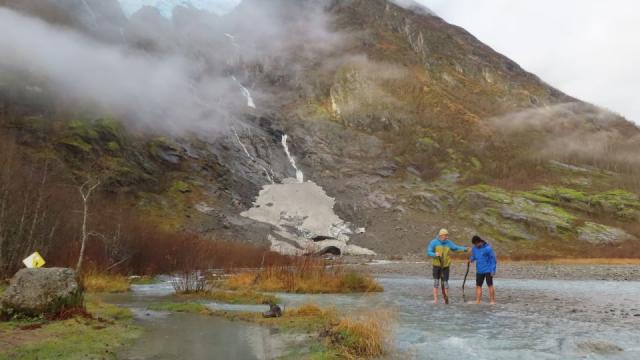
Humans are causing alarming changes to the planet. Collectively, we are destroying ecosystems, polluting the ocean and altering our climate. As individuals, we can all play a role in making things better.
The majority of the world’s population live in urban areas, and for many people exactly how our actions impact remote and wild areas can be difficult to see. For this year’s Call to Earth Day we want to focus on the crucial connection between cities and wilderness.
We will be featuring stories from around the world, from the inner city, the suburbs, the plains, the mountains, the jungle, and more to show how people living in urban areas can still have a huge impact on both wild environments around the world and the hidden wilderness within our cities.
Across the globe, incredible individuals and groups are working to reverse the damage to nature from the wilderness to the city. On November 8, 2023, CNN’s third annual Call to Earth Day, Our Shared Home, will celebrate these people while inspiring positive change.
Students at United World Red Cross Nordic witness firsthand the damage to threatened glacial marine environment in Flekke, Norway, for Call to Earth Day 2022. - United World Red Cross Nordic
Your participation is key to a successful Call to Earth Day, and we’re grateful you’re keen to be involved. Planning an event can be daunting, so here are our top tips on how to embark on your Call to Earth Day preparations.
Whether you live in the wilderness and have firsthand experience of the dangers to the Earth’s natural spaces, or whether you can effect change at the source by altering your habits and educating others, you can help us to protect Our Shared Home.
To get started it’s important to figure out what you hope to achieve with your event. It could focus on reducing plastic pollution, tackling deforestation, protecting biodiversity, or a different environmental issue that is close to your heart.
In the warm waters off the coast of Queensland, Australia, students at Belgian Gardens State School learn about the amazing coral environment on their doorstep for Call to Earth Day 2022. - Belgian Gardens State School
Decide which environmental issue you want to take action on and try to figure out how your group can help.
Your event could fall under one of these categories or it could be something else entirely:
If you need a little encouragement, you can use our Call to Earth Day activity prompts – they are particularly good for events involving younger children.
If you are still struggling to figure out what to do, we’re here to help. Drop us an email at calltoearth@warnermedia.com and one of the team will be in touch to help you craft your event.
Once you have a plan, the next step is to let us know what your event will be. You can register your Call to Earth Day event below.
Now you need to let your network know what you’re doing, and when, where, and why your event is taking place. (We find emails, social media, and word of mouth are a little better for the planet than posters.)
When the day comes, make sure to let the world know about your event. Please be sure to take pictures and videos of what you get up to and post them on social media.
Please use the hashtag #CallToEarth or #CallToEarthDay so we can find the posts and potentially feature them in our coverage of the day.
If you want to make beautiful videos of your event, you can download special Call to Earth music to put in the background below. If you use music that we don’t own, then we sadly won’t be able to share your videos!
Final launch of Europe's Ariane 5 rocket set for July 4 after delay
The final liftoff of Europe's Ariane 5 rocket has been retargeted for July 4, three weeks later than originally planned.
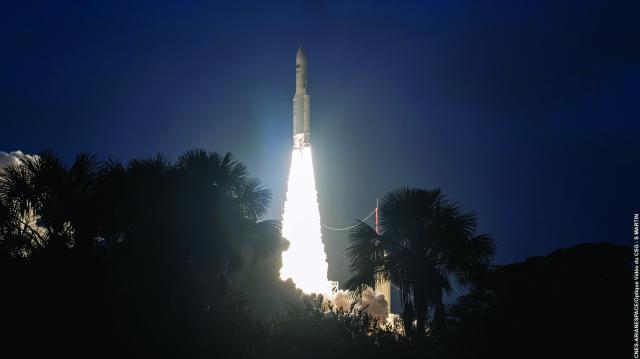
Europe's veteran Ariane 5 rocket will generate some swan-song fireworks on the United States' Independence Day, if all goes according to plan.
You can watch the liftoff here at Space.com when the time comes, courtesy of Arianespace.
The final Ariane 5 mission will deliver two satellites to geostationary transfer orbit (GTO), a waypoint on the road to geostationary orbit, which lies about 22,200 miles (35,800 kilometers) above Earth. (GTO is an elliptical path whose maximum altitude is close to that of geostationary orbit; satellites in GTO then move into the circular geostationary orbit by conducting engine burns.)
The other payload, Syracuse 4B, is a communications satellite that will be operated by the French military. Syracuse 4B "will enable the French Armed Forces to remain permanently connected during deployments," Arianespace wrote.
"Syracuse 4B will be totally protected against the most extreme jamming methods," the company added. "Built to defend French sovereignty, the satellite will also be able to support operations led by NATO and the EU."
RELATED STORIES:
The Ariane 5, which can carry more than 22 tons (20 metric tons) of payload to low Earth orbit, has been a fixture on the launch scene for decades: The rocket debuted in 1996 and now has 116 liftoffs under its belt.
Astronaut Story Musgrave's Apollo-flown medallions, shuttle toiletries up for auction
A medallion that was flown to the moon for a member of NASA's astronaut corps opened for bids at just $100. The same astronaut's copy of a checklist he used on his first launch also listed for $100.

A medallion that was flown to the moon on the first lunar landing for a member of NASA's astronaut corps opened for bids this week at just $100.
Each of the 100 lots opened at only $100.
At the time this article was published, there were still items with no bids, meaning some of Musgrave's items still had the potential to sell for $100 (plus a 25% buyer's premium assessed by the auction house).
RELATED STORIES:
Other items from Musgrave's collection include stacks of 20 or more embroidered mission patches flown on three of his missions; a collection of 20 photos signed by Musgrave and his crewmates from his last launch into space; a pile of more than 50 NASA photos, each autographed by Musgrave; and Musgrave's personal stash of almost 200 postmarked envelopes ("covers"), each cancelled for events in space history. There are also certificates that Musgrave received from NASA for his years of service; an access badge he wore to be in Mission Control during the ASTP mission; and a unique set of handwritten index cards.
"Interesting lot of 49 index cards handwritten by Story Musgrave, the most educated astronaut with six academic degrees and the only astronaut to have flown on all five space shuttles," the description in the auction catalog reads. "Many of the cards concern Musgrave's engineering training, with 'CRE' (Certified Reliability Engineer) written at the top, followed by philosophical musings."
All of that, at least at their start, for just $100.
NASA opposes lithium mining at tabletop flat Nevada desert site used to calibrate satellites
Environmentalists, tribal leaders and others have fought for years against lithium mining ventures in Nevada. An ancient Nevada lakebed beckons as a vast source of the coveted element needed to produce cleaner electric energy and fight global warming. At the space agency's request, the U.S. Bureau of Land Management has agreed to withdraw 36 square miles (92 square kilometers) of the eastern Nevada terrain from its inventory of federal lands open to potential mineral exploration and mining.

RENO, Nev. (AP) — Environmentalists, tribal leaders and others have fought for years against lithium mining ventures in Nevada. Yet opposition to mining one particular desert tract for the silvery white metal used in electric car batteries is coming from unusual quarters: space.
An ancient Nevada lakebed beckons as a vast source of the coveted element needed to produce cleaner electric energy and fight global warming. But NASA says the same site — flat as a tabletop and undisturbed like none other in the Western Hemisphere — is indispensable for calibrating the razor-sharp measurements of hundreds of satellites orbiting overhead.
At the space agency's request, the U.S. Bureau of Land Management has agreed to withdraw 36 square miles (92 square kilometers) of the eastern Nevada terrain from its inventory of federal lands open to potential mineral exploration and mining.
NASA says the long, flat piece of land above the untapped lithium deposit in Nevada's Railroad Valley has been used for nearly three decades to get measurements just right to keep satellites and their applications functioning properly.
“No other location in the United States is suitable for this purpose,” the Bureau of Land Management concluded in April after receiving NASA's input on the tract 250 miles (400 kilometers) northeast of Las Vegas.
In Railroad Valley, satellite calculations are critical to gathering information beamed from space with widespread applications from weather forecasting to national security, agricultural outlooks and natural disasters, according to NASA, which said the satellites “provide vital and often time-critical information touching every aspect of life on Earth."
That increasingly includes certifying measurements related to climate change.
Thus the Nevada desert paradox, critics say. Although lithium is the main ingredient in batteries for electric vehicles key to reducing greenhouse gases, in this case the metal is buried beneath land NASA says must remain undisturbed to certify the accuracy of satellites monitoring Earth's warming atmosphere.
“As our nation becomes ever more impacted by an evolving and changing environment, it is critical to have reliable and accurate data and imagery of our planet,” said Mark Moneza of Planet Labs, a San Francisco-based satellite imaging company that has relied on NASA's site to calibrate more than 250 of its satellites since 2016.
A Nevada congressman introduced legislation earlier this month seeking to revoke the bureau’s decision to withdraw the land from potential mining use. Republican Rep. Mark Amodei told a House subcommittee last week that the decision underscores the “hypocrisy” of President Joe Biden's administration.
“It is supposedly a goal of the Biden Administration to boost the development of renewable energy technology and reduce carbon in our atmosphere,” Amodei said. “Yet they support blocking a project to develop the lithium necessary for their clean energy objectives.”
The Carson City, Nevada, company holding most of the mining claims, 3 Proton Lithium Inc., had not submitted any formal project plans in 2021 when NASA requested the land withdrawal. But the firm claimed to have done extensive research in anticipation of future plans to extract the brine-based lithium resource it said is one of the 10 largest deposits in the world.
Chairman Kevin Moore said the tract's withdrawal likely will prevent his energy company from pumping the “super brine” from about one-third of its claims there, including the deepest, richest deposits holding about 60% of the site's value. He joined Amodei in testifying last week before the House Resources Subcommittee on Mining and Mineral Resources.
“This project is a vital part of transitioning to a green economy, creating good-paying American jobs, combating climate change, ending America’s over-reliance on foreign adversaries and securing a domestic supply chain for critical and rare earth minerals,” Moore said.
Other opponents of BLM's move include James Ingraffia, founder of the energy exploration company Lithium Arrow LLC. He told the bureau in earlier public comments that by establishing obstacles to Railroad Valley lithium mining, it was undermining efforts to combat climate change.
“Essentially, your actions are boiling down to, ‘There’s a problem that we want to keep worrying about but NOT allow to be solved,' " he said. "It’s self-contradictory.”
3 Proton Lithium insists its brine-pumping operations would cause little if any disturbance to the land's surface. But NASA doesn't believe the risk is worthwhile.
The area's unchanged nature has allowed NASA to establish a long record of images of the undisturbed topography to assist precise measurement of distances using the travel time of radio signals and assure “absolute radiometric calibration” of sensors on board satellites.
“Activities that stand to disrupt the surface integrity of Railroad Valley would risk making the site unusable," Jeremy Eggers, a spokesman for NASA's Goddard Space Flight Center in Greenbelt, Maryland, told The Associated Press.
"The ultimate decision was to protect Railroad Valley, which in turn protects the critical scientific data that multiple economic sectors rely on,” he said in an email Thursday.
0 Likes
